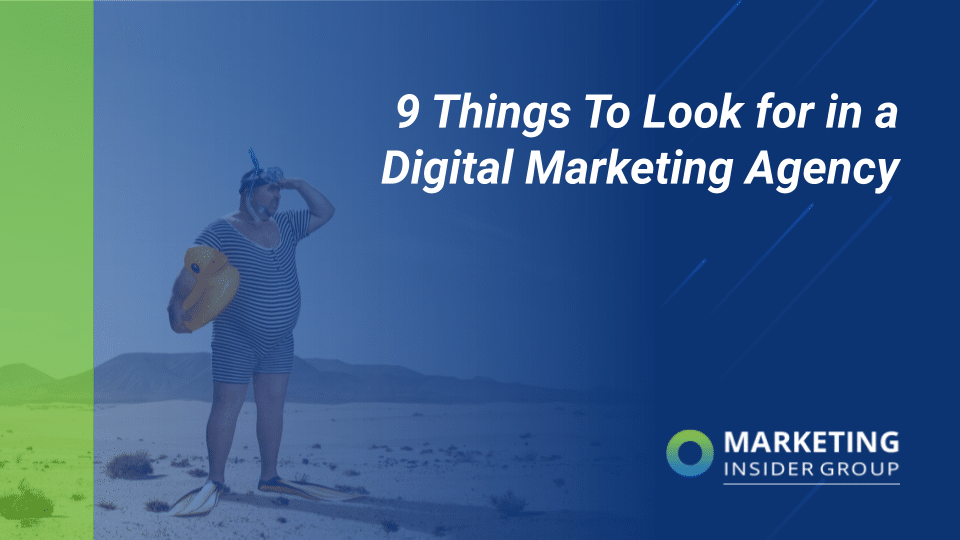
How to Build a Multichannel Digital Marketing Strategy
Although marketing has never been simple, one could argue that it has never been more complex than it is today. Modern technology has revolutionized the way that businesses and consumers interact. Platforms like social media and smartphones allow customers and brands to connect more than ever, while technology has turned marketing strategies upside down by making every decision data-driven.
Marketing managers have two ways to perceive the ever-increasing number of marketing channels available today. Chaos or opportunity.
From video marketing and gamification to in-person events and blog content, not only are there more ways to reach customers, there are more channels that consumers are accustomed to and therefore are willing to engage with.
More recently, the rapid pace of tech has allowed us to add virtual assistant-based platforms, and more mainstream use of what was once deemed as futuristic, like augmented reality, to their shortlist. As the martech industry keeps offering up more tools, technology drives forward, and AI gets smarter, the list is only going to get longer in the future.
Thanks to all of these changes, it is now necessary for every brand to adopt a multichannel digital marketing strategy. It has been estimated that up to thirteen separate interactions with a brand are needed before a consumer can even become a potential sales lead; therefore, businesses should be making the most of all possible marketing avenues in order to generate more touchpoints with consumers.
However, casting a marketing wide net and hoping something sticks is not exactly the most effective method. Not to mention that digital marketing campaigns can be costly, so businesses should be wise and strategic when it comes to multichannel methods.
Today’s consumer wants more value from the brands they engage with. This higher expectation is both the product of and the reason for the success of content marketing. By focusing on and prioritizing those channels that live up to our customer-centric reality, you can put your efforts into boosting the quality of the channels that count the most rather than spreading your marketing out. This also gives your strategy an end goal – the ultimate brand destination – for the other marketing channels to feed into and support.
The CMO challenge is to develop strategies that will wield the most relevant channels for a brand, without wasting marketing dollars or overwhelming customers with too much information.
So, how can businesses make this happen? How do you establish a smart multichannel digital marketing strategy?
Quick Takeaways:
- Don’t get on any digital media platform just because it’s gaining traction. Dig deeper to see if there is ROI.
- Identify the tools and solutions that will help you set up and automate digital processes.
- Don’t spread yourself too thin. Master one area first and then move on to another.
- Always keep an eye on your KPI dashboard.
Why is Multichannel Marketing Important?
Because you need to be in all the places where your customers are searching for information and help them find it…
Because more and more, our customers are using multiple channels to find the information they need. They are relying less on your website and the relationship with your sales representative than they used to. And they are increasingly finding the information they need to make business decisions on their own.
Is there a gap? Heck yeah! According to Mary Meeker, there is a $20 billion digital channel spending gap made evident by the % of advertising dollars spent on internet and mobile channels vs. the amount of time spent in those channels by today’s digital consumer.
In other words, businesses don’t spend enough money on the channels where people are spending increasing amounts of time.
And that is why Forrester called their report “The Multi-channel Maturity Mandate.” According to Forrester:
Today’s customer has much more control over the buying process than today’s marketer does. Now that the Web and social media are part of virtually everyone’s daily life, buyers have more choices (more sources, more outlets, more offers) and more opinions (from pundits to peers) to consider.
Multi-channel marketing is the new reality of how businesses can better meet the needs of customers in the wide array of choices and content they use.
And to me, multi-channel marketing is the 2nd core piece of content strategy which seeks to provide the content our audiences are searching for, in all the places they search.
The study concluded that achieving maturity in multi-channel marketing can deliver significant increases in business benefits, mainly from the expanded reach achieved through an optimized marketing mix.
This supports the evidence from content marketing best practices that demonstrate how you can achieve higher levels of engagement earlier in the buying process with effective content targeted by buying stage.
Interestingly, the study also showed increased customer satisfaction from those companies who were identified as more mature! So with a focus on multi-channel marketing, you can engage with more people and improve their satisfaction with your brand at the same time!
The five key findings:
- Marketers are familiar with multichannel marketing as an area of focus for improved marketing ROI with 40% of those surveyed assessing themselves as mature practitioners of multi-channel marketing.
- It’s not a matter of will, but of skill. Skill gap was identified as the main obstacle to more efficient, integrated marketing.
- Those marketers who identified themselves as mature have demonstrated significant business gains in overall campaign performance and ROI.
- Mature multi-channel marketers were more likely to be early adopters of innovative technology, more likely to have a good relationship with their colleagues in IT and more likely to have a closer alignment with sales.
- Even the mature multi-channel marketers considered their marketing programs to lack true integration and believed that further optimization was possible.
Elevate the Company Website
The brand website has the potential to serve as a lot more than a company’s digital face to the world. It’s an opportunity to create an experience in itself with a strategic selection of website content, including blog posts, videos, case studies, and more. 44 percent of consumers rate brand websites as the best marketing channel for understanding product benefits.
But, if you want your website to stand out, you really want to make the most of this marketing channel, giving consumers a destination they want to come back to, just for the content.
Those organizations who have more sophisticated content marketing strategies have already mastered the content hub, either on-site or as a separate branded site. This is one step above a basic website with content. It creates a place for all your best content to reside, making it easier for visitors to access what they may be interested in. And, for you to expose them to more of what you have to offer, keeping them engaged and hooking them with a ‘what’s in it for me’ that blows their expectations out of the water.
Here’s what Equinox’s hub, Furthermore, looks like. This luxury fitness company offers more than information, exploring a way of living that their target aspires to.

Aside from a hub, another method for elevating the company website is to build an ultimate learning resource destination – a sort of Library of Alexandria for your niche. Going beyond the well-organized content of a hub, you can offer courses and educational tracks that give your visitors something to strive for. This also helps to guide them along a particular learning track instead of just bombarding them with a vast library of content. For example, a video series and set of eBooks can be turned into a comprehensive learning module for potential buyers.
HubSpot Academy is a great example of this ultra-useful educational website experience.
You get a sense that there is an endless well of information to tap into – because there is. And, it’s all free. That’s a remarkably compelling reason for stepping into HubSpot’s online brand world.

These methods of leveraging the company website to create extreme value aren’t just practical in terms of lead generation and establishing thought leadership. They are also part of creating a brand world buyers want to become a part of. It is a stage beyond usefulness and quality, invoking a lifestyle that B2C consumers aspire to and a level of success and efficiency that B2B buyers strive for.
Use Goals to Determine Your Channels – And Budget
Not the other way around. To create an effective strategy with various marketing channels, you need to identify your marketing goals clearly first. Then, determine what channels can be used to reach those goals. And finally, how much money should be allocated for each resource to achieve your objectives.
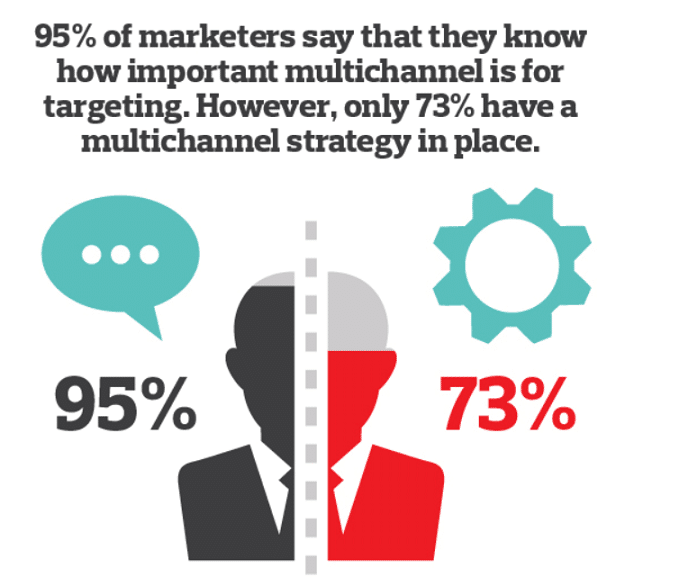
The mistake some CMOs fall into, or are pressured into by C-suite’s need for a budget first approach, is to create a marketing budget with only a preliminary plan, not a dynamic strategy, for how to leverage each relevant channel. 20 percent to influencer marketing. 30 for live events, 15 for improving the company app, then the remainder for social media, web content and video production. The inherent flaw with this approach is it neglects the actual channel strategy.
- Which channels are the most relevant for your audience right now?
- How are your goals changing, for example, if there is a need for enhanced customer retention, more engagement, and higher conversions, how can various channels be better put to use?
- Does more of the budget need to be allocated to push a powerful video, influencer, or experiential campaign in the short, medium or long term to reach specific short- and long-term objectives?
- How are market trends shifting regarding social media usage, device preference, podcast subscribers – what story does the data tell about how effective your current channel usage is?
- Are there any unique factors such as predicted tech changes, consumer expectation changes or other elements that call for edging into a new channel in the next X months or X years to maintain market share?
- Which channels aren’t working now to reach objectives? Should more or less be allocated as a response?
Having various marketing channels to use means you have more roads to connect with customers. By evaluating which destinations you want to reach, you can better decipher which roads you want to put more money into with the current budget allocation for the individual needs of your organization.
Identify Your Audience and Determine Their Preferences
One of the biggest mistakes that businesses make in digital marketing is assuming that they need to utilize every single platform to reach their customers. The truth is that not every marketing channel is appropriate or necessary for every business. Not every business needs to market on Snapchat and LinkedIn. Some would do well with blogging content, while others should put their focus on video or audio content like vlogs and podcasts.
In order to ensure that your digital efforts are going to have the biggest impact, you need to first clearly define and understand who your audience is. Demographical factors play an important role in audience preferences. Take social media use as an example – according to a study by Pew Research, platforms like Snapchat and Instagram are preferred by younger consumer groups, whereas Facebook and YouTube are used more widely by older generations.
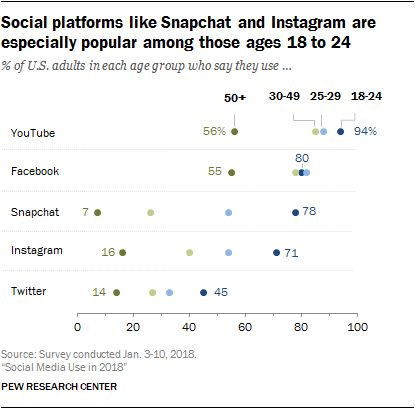
Consequently, if your audience is primarily made up of consumers that are above the age of 40, Snapchat wouldn’t exactly be the most effective marketing channel to utilize.
Take a look at your audience makeup and see only where they are consuming the most content and advertising and where your brand can meet them. Be sure to pay attention to how they are consuming content as well. Do they read blogs or would they rather watch YouTube tutorials? Are they more likely to engage with visual posts or do they want informational content like case studies?
You may need to conduct your own market research among your target audience or survey a few focus groups in order to obtain this information. Do also take a look at industry reports and benchmark studies to give you a general idea of consumer behavior in your niche.
Identify a Head Strategist
Research by Gartner has found that more than 90 percent of marketers have trouble connecting more than three channels in a multi-channel strategy. To get the most out of marketing channel usage and to be able to successfully manage several inroads to your customers, you don’t want too many cooks in the kitchen. One lead strategist should steer the ship and focus on staying on course towards established marketing goals.
Having a social media strategist, a lead for event marketing, email marketing, and other channels will serve to optimize each one. But to operate with a holistic, multi-channel strategy with each channel supporting and being supported by the others, having a designated planner or strategist to oversee each multi-channel campaign is crucial.
This will also help to ensure a targeted, cohesive message is being consistently used across channels. Which is a must to create the seamless experience your customers expect.
Strengthen Your Martech Stack
You need the proper tools to help you establish a presence, track results, and keep track of important metrics and customer accounts. But creating a great martech ecosystem that supports your efforts doesn’t happen by accident.
As you start to develop your multichannel strategy, pay attention to the areas that will benefit the most from technology. While there are tools for nearly every aspect of digital marketing, you may benefit from utilizing tool “suites” or “solutions” that can be applied to multiple channels and have use cases across industry verticals.
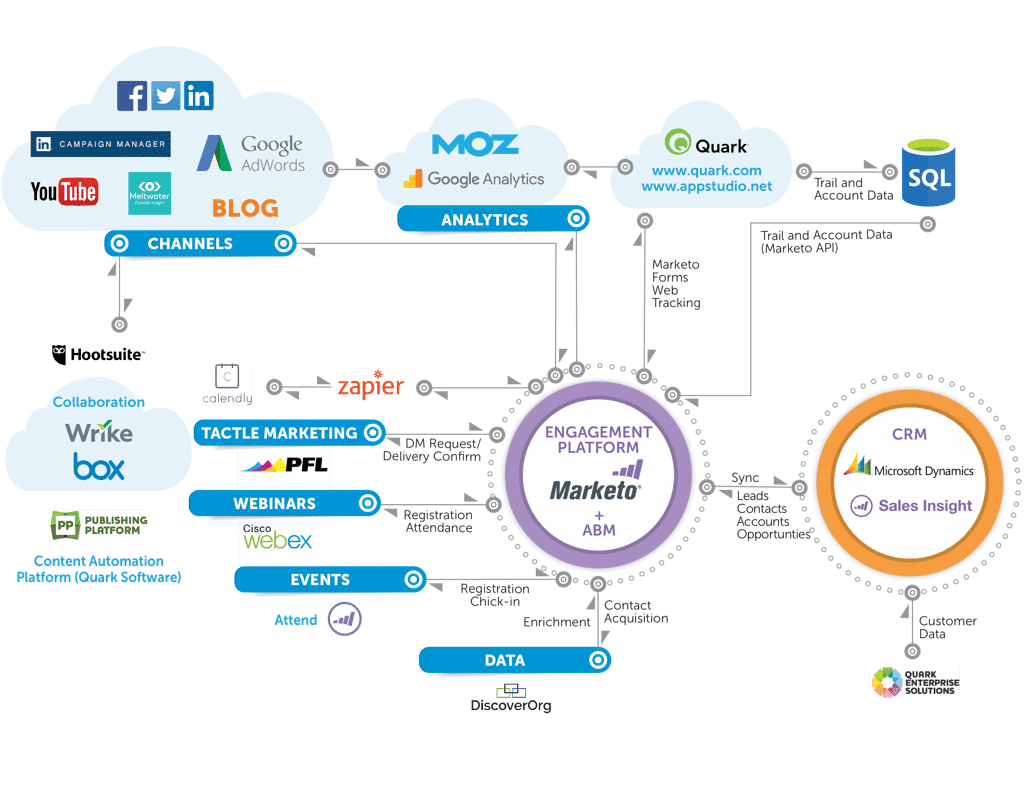
For instance, Marketo offers different products called Engage (for brand building), Bizible (for revenue attribution), and Adobe Experience Cloud (for improving CX), which between them, enable organizations to automate email and mobile marketing, manage and nurture leads, implement ABM practices, create and distribute content with predictive analytics, find appropriate influencers on social media, and track important metrics all of these channels.
Start with a Pilot and Expand
One of the major pitfalls of a multichannel marketing strategy is the lack of focus. When numerous new channels are introduced, it can be extremely overwhelming and have a negative impact on the quality of your team’s efforts.
Sadly, a major mistake that many digital marketing teams fall prey to is trying to implement too many changes at once. This can lead to some costly mistakes as teams struggle to keep track of all the new strategies and approaches.
There is no need to overwhelm your marketing team with tons of strategies all at once. Start with simple but effective marketing, such as building an email database and creating a solid email trigger-based system. Then move on to SEO focused content, like blog posts, videos, and external links. Expand into other paid sources like social ads, PPC, or even televised commercials.
Again, the order of the most effective methods is dependent on your business’s specific audience, so researching their preferences and behavior is critical in order to determine which methods will be likely to have the biggest payoffs.
Track Things Over Time and Prioritize
Great marketing strategies do not happen overnight, so you shouldn’t expect the results to occur that quickly either. Marketing is a nurturing process that helps to move customers down the sales funnel through influential content. If you aren’t seeing immediate results from these new digital channels, don’t quit. It can take time for these marketing strategies to really bring about conversions.
The most important thing here is that your team has access to real-time tracking programs to keep an eye on KPIs. Again, give these strategies time to cultivate and develop, but look for signs of growth or stagnation over long periods of time to see where changes are needed. If a method is not bringing about results after a few months, then look for ways to improve rather than scrapping it altogether.
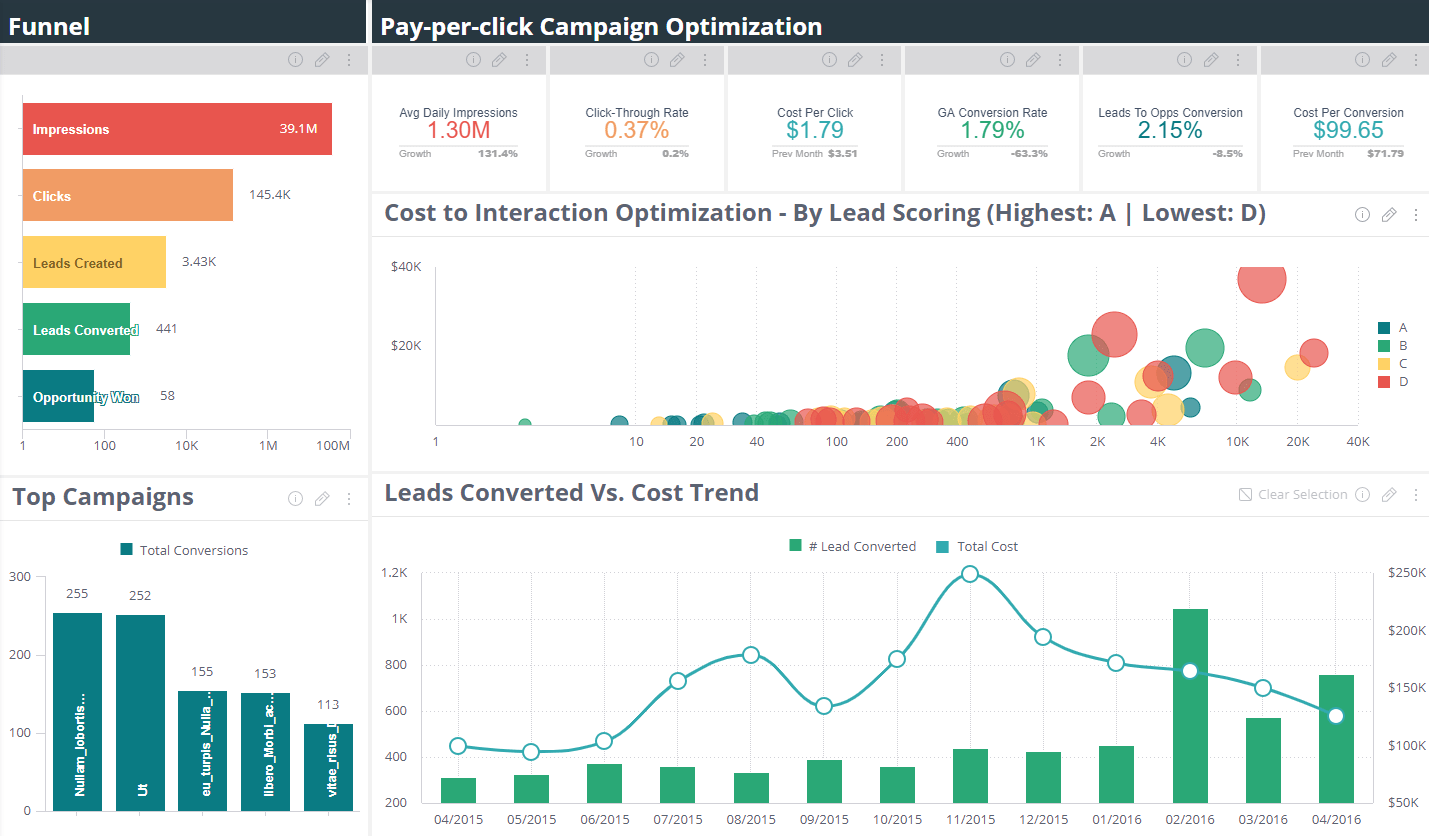
The questions you need to ask yourself for each channel are:
- Which consumer segments will you target?
- How will you position your product?
- Will you set sales targets? What if you fall short?
- How much will you spend on advertising?
- How will you retain customers you acquire from that channel?
That said, make your prioritization as real-time as possible. Keep track of which channels are delivering results in both ROI and engagement, and adjust as channel capabilities shift. This is the only way to manage multiple marketing channels effectively. Your organization is better placed to take advantage of opportunities and to eliminate efficiencies when you are constantly watching the data.
As Amanda Nelson, an expert on measurable marketing and Ringlead’s Director of Marketing explains, “…. We always filter channels based on its ability to engage and create action. [Which ensures] every touch point in the ‘journey to customer’ is thoughtful, consistent, and relevant.”
Have your key performance indicators laid out for each channel. Then, don’t just look for when your benchmarks are hit. Pay close attention to how KPIs change over time to track how well each channel is doing with your audience for each period.
Connect to Buyers with Live Experiences
The other marketing channel that has the greatest potential for influencing your consumers is event and experiential marketing. 41 percent of consumers rate live experiences as number one for helping them to understand what a product is all about, making events a must for a marketing strategy that creates real value for consumers. Events are also important if you want to drive substantial revenue and brand-boosting benefits.
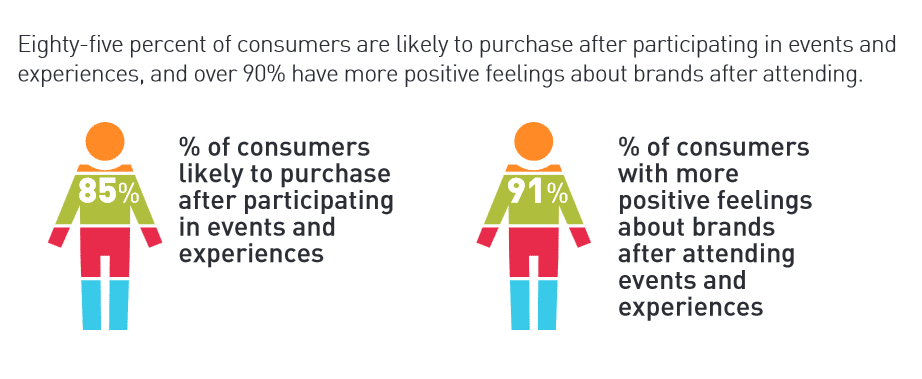
In order to get the greatest impact out of event and experiential marketing, the goal is to integrate the in-person experience with the wider content marketing strategy.
- Interview event speakers for your blog posts, podcasts or videos before or post-event
- Leverage your social media channels to post live updates of the event for live streaming and to engage participants at the event
- Use event tools to help measure the value of your event and to ensure you’re maintaining your brand’s signature level of customer service
- With enough participants, you use surveys to collect data to use for future white papers
- And, of course, align the tone, messaging, and goals of your experiential campaigns and live events with the rest of your content marketing strategy
Events and other experiences don’t just offer value. They also provide the foil for digital content, putting a human face on your brand and fostering a much deeper perception of authenticity than digital content alone can create. This is true even for people who may not have been direct participants. Those who indirectly engage with the experience through exposure to videos, photos, and other repurposed content still get some of the impact, seeing there are real people, real passions, and real ideas behind a brand.
Leverage Dynamic Automation
Today, automation can be used for much more than efficient, targeted email campaigns. On-site messaging to help with your lead generation, cleverly timed SMS notifications and even thoughtfully sent direct mail, such as a personalized thank-you card sent out when a customer demos your product or a discount after that first purchase. Automation is what makes multi-channel management possible in the first place. Otherwise, sending personalized, timely, relevant content at scale would be impossible.
So, take advantage of the software that’s out there to support more effective, dynamic marketing. There are your comprehensive software solutions like Marketo, HubSpot, and Eloqua, but there are also more focused, specialized tools to help create, refine, and automate specific channels, such as VIdyard for a more visually focused campaign, Buzzsprout for podcasts and Creator IQ for influencer campaigns.
You don’t necessarily want to head back into the dark ages of marketing technology and juggle multiple platforms. But, if your organization benefits immensely, and your audience resonates immensely, from particular channels, thinking outside the one-platform all-in-one marketing automation box may be a good idea.
Dig Your Tentacles In
The bottom line is, if you want your products or services – as well as the brand story itself – to resonate with your audience, make sure you are connecting with your buyers through the channels they respond the most positively to.
Since the modern world is more connected through technology than ever before, businesses have the opportunity to connect with consumers at nearly every digital turn. A strong multichannel marketing strategy is far and away the best way to cultivate relationships and convert customers – if it is done correctly.
In order to get things started off on the right foot, you need to
- Really understand who your audience is and how to best connect with them.
- Look into all of the data sources you can get your hands on to gather demographical and behavioral data to see where you need to focus your efforts.
- Identify the most profitable channels and look for tools and technology that will help your team the most.
Remember too that there is no need to rush and dive in head-first to multichannel. Instead, use your data to find the areas that will make the biggest impact – whether it’s targeted email marketing or a stronger social presence. Start to slowly integrate other channels and methods, while constantly keeping an eye on your revenue.
If you are ready to get more traffic to your site with quality content that’s published consistently, check out our Content Builder Service. Set up a quick consultation, and I’ll send you a free PDF version of my books. Get started today–and generate more traffic and leads for your business.



